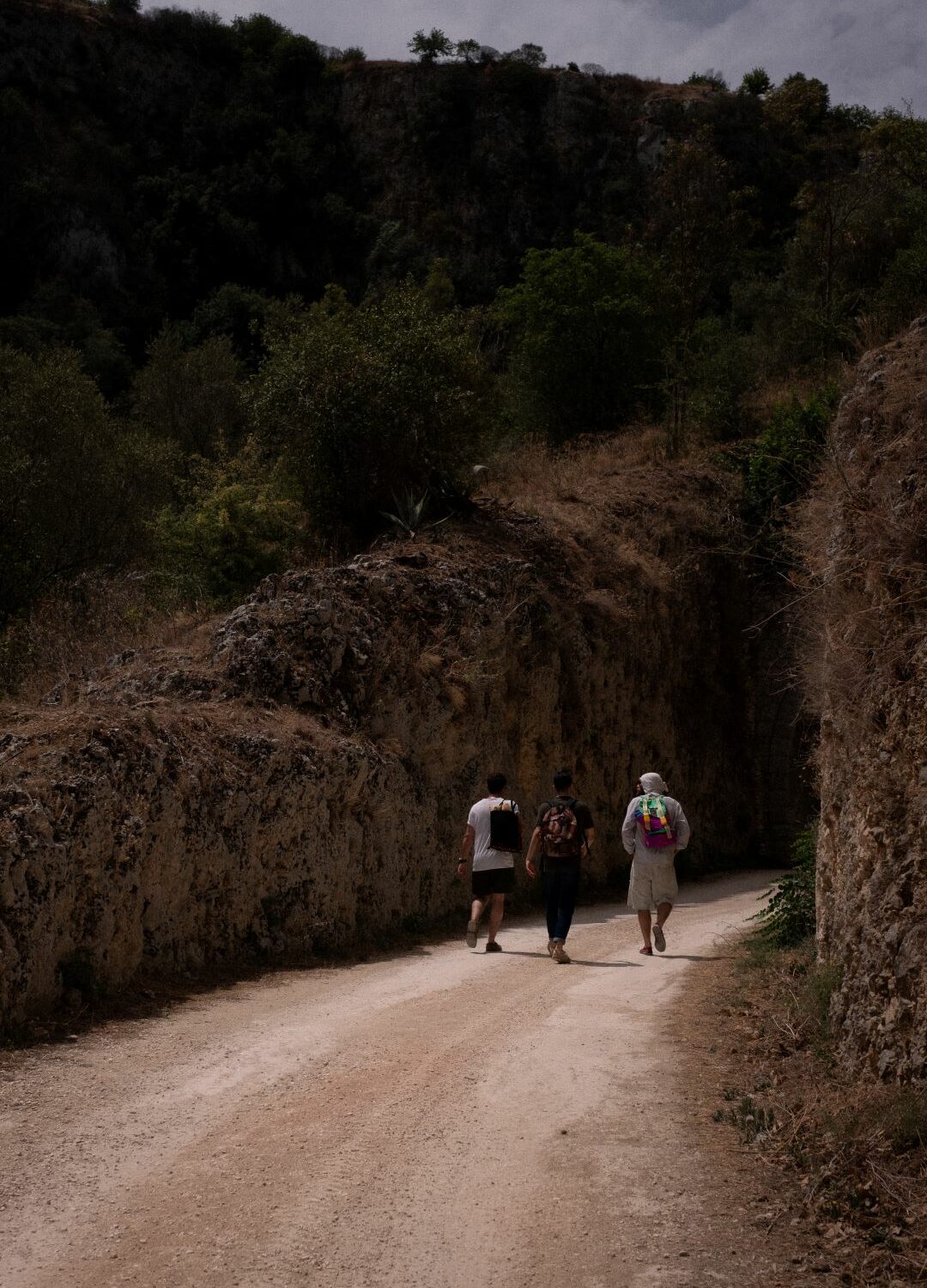What can one say in the face of such magnificence, in the face of such antiquity?
There were four of us; friends who set out in search of something bigger than ourselves, of places and emotions that would remind us of a past we never lived but somehow always present in our dreams, in our hearts. I did not know much about the destination. It was my first time in Catania and discovering the infinite nuances of this ancient city was enough adventure to fill the few days I had available. Nevertheless, on the last day of my visit I was won over by curiosity and the fascination of discovery and together with some friends I ventured into the Syracuse hinterland.
I was born and raised in New York City. Beyond countless trips to Italy – the country of my origins that has now become a second home for me – the most heartfelt ties I have with the Bel Paese are thanks to my grandfather. He was a person who had a deep love for Italy; for him, passing on even an iota of this love constituted the greatest gift he could have left to his grandchildren. And it was just that. We would spend hours listening to his tales of episodes from the Divine Comedy, which he could often recite from memory. Because of this, despite the thousands of miles that separated us from Italy for much of the year during my childhood, it always seemed like a close place. Whether it was because of the churches he would take us to visit when we were in Rome, or because of the tales of classical mythology – of Cyclops, Ulysses, and Vulcanus who kept his forge under Mount Etna – thanks to my Grandfather, Italy in my mind represented a gateway to a time outside of time that spurred me to discover, examine, and reflect.
Finding myself in Sicily, a land that I had not yet had the opportunity to get to know up close, but which, thanks to Nonno, I have always felt very close to my heart, I could only think of him when we arrived at the entrance to the Archaeological Park of Pantalica. Located in the province of Syracuse, Pantalica is an ancient settlement from the first half of the 13th century BC. It is not quite sure whether the name of the place comes from the Greek πάνταλίθος, “place full of stones,” or from the Arabic Buntarigah, “place full of caves.” Regardless of its etymological origins, it does not take long to come to understand how these naturalistic landscapes could have inspired the mythological tales of the ancients. It is all organized in a kind of harmonious chaos that only undisturbed nature is capable of forming; composed of little animals and insects that escape among colorful lush plants and colossal limestone rocks that dazzle under the Sicilian sun. Overwhelmed by the endless wonders that surrounded me on all sides, it was impossible for me to conceive the immensity of it all except through imagination. Walking between one path and another, I was reminded of my grandfather’s stories: of the various mythological figures belonging to an earthly dimension but somehow linked to the metaphysical, to the unseen, to phenomena that without a symbolically human representation remain difficult to comprehend.
My mind was traveling as never since I was a child; I had just reached the point of making some sort of precarious sense of these miracles of nature when, turning a corner, we came upon the Necropolis of Pantalica. We were in a valley filled with vegetation, the sun was beating down, in front of us a white and very high cliff of which the only taller things were the hawks gliding by, carried by the wind currents. In this monumental cliff, a series of rectangular holes placed without any kind of apparent organization; they too would have passed for naturalistic phenomena were it not for their perfectly square shape. Far more than mere caves made by human hands, those caves are tombs carved out of limestone some 3,300 years ago. About 1,300 years before the birth of Christ, about 600 years before the founding of Magna Graecia, contemporary with the advent of the Iron Age. Sacred, imposing and mute footprints of an era far removed in time but intimately present in space. All the order (albeit imaginary) that I had managed to give to the wonders of this place in order to best digest them was again discombobulated.
What can one say in the face of such magnificence, in the face of such antiquity? What can one say in the face of this island, Sicily, which geological evolution has wished to place at the center of the Mediterranean, and thus at the center of the world… there where the forge of Vulcanus resides: the source of destruction and terror, but also of new life and creation. What can be said in this magical and so ancient place, where even Ancient Rome and Magna Graecia, put in chronological perspective begin to take on the semblance of events that happened the day before yesterday!?
The answer arises for me in its immense simplicity: nothing. One cannot and should not say anything. One can and should only listen. Listen, observe and realize that-unlike what we delude ourselves about in this world so “advanced” that values the virtual more and more than the real-we are neither the beginning, nor the end. We do not have all the answers. Nor are we as big as our skyscrapers or our advanced technology would have us believe.
In fact, we are small. Never have I realized this more keenly than when I found myself under the Necropolis of Pantalica. And that is okay because it is precisely in our smallness and our limited human simplicity that we are able to do great things that last over time, perhaps even for 3,300 years. Sicily, its magnificence, its antiquity, and its Necropolis of Pantalica remind us of this.By Salvatore Ambrosino
The article We’re small, it’s okay comes from TheNewyorker.

